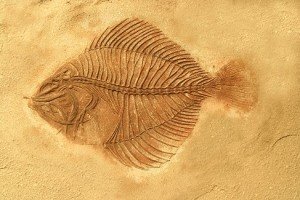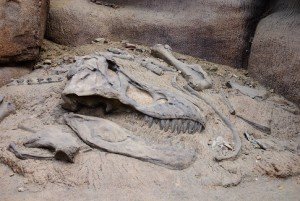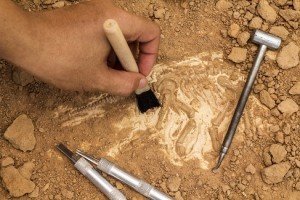What exactly are fossils and how do they help to enhance our understanding of the history of our planet?
You’ve no doubt heard people talk about fossils before, but if it hasn’t been pointed out, it’s not always obvious what an absolutely massive role they have played (and continue to play) in scientific discovery.
What are fossils?
Fossils are the hardened remains of life forms, left behind from thousands or millions of years ago. These prehistoric leftovers can take the form of fossilized remains, impressions of organisms left behind in other forms, or even marks like footprints from so long ago.
Fossils have been found of ancient human civilizations, early forms of life like trilobites, and they’re all the evidence we have of what was happening on planet Earth before humans got here.
 Relatively few living things leave behind a fossil. Most simply decay naturally. But under special circumstances, we are gifted the remains or impression of something that lived long ago that can be used to better understand the world and the way life evolved.
Relatively few living things leave behind a fossil. Most simply decay naturally. But under special circumstances, we are gifted the remains or impression of something that lived long ago that can be used to better understand the world and the way life evolved.
Those organisms become fossils when they’re changed by outside forces. Heat and pressure from being buried can occasionally cause the organic tissue to release hydrogen and oxygen, which leaves behind carbon. That process leaves us with a detailed carbon impression in the rock.
The most common method is what you’ve no doubt seen with dinosaurs. It’s called permineralization or petrification. As the soft tissues of the organism decay, the bones are left behind to fossilize. Then water seeps in and dissolves minerals, causing the formation of crystals that make the remains harden.
With a mold, another common form of fossilization most often seen with smaller organisms or plants, the organism completely dissolves in sedimentary rock, leaving behind only an impression of the organism’s exterior.
What do fossils teach us?
Everything we know about dinosaurs, mammoths, and other creatures that lived before our time is taken from the fossil record. The location of fossils, the situation they’re found in, what they’re fossilized with, and other details can tell us much about the subject.
Sometimes fossils reveal that a particular kind of dinosaur traveled in packs. Or that similar species on the opposite sides of the planet evolved slightly different features based on the animal’s needs in that region. Or, like in this situation, you can find evidence in a whale bone that this particular whale was attacked by a shark, which can start to reveal details about the ecosystem the organism lived in.
Where are fossils found?
 Fossils can theoretically be found in many, many places. However, the need for the organic remains to be preserved in rock under immense pressure for thousands of years means you’re not going to find fossils just anywhere.
Fossils can theoretically be found in many, many places. However, the need for the organic remains to be preserved in rock under immense pressure for thousands of years means you’re not going to find fossils just anywhere.
The geological conditions required to produce fossils make some areas perfect for discovering fossils, like the exposed rock at Dinosaur National Monument. There, a huge chunk of ancient rock once buried was exposed and is the location of many great dinosaur finds, including the great carnivore allosaurus, the massive apatosaurus, and the childhood favorite of many, stegosaurus.
It’s not just animals that fossils tell us about, however. It’s humans too. Just this year, paleontologists made an incredible discovery when they found a 700,000-year-old ancestor of humans that was quite short.
How can you get involved?
 The world of fossils is exciting and you can get closer to them and the window into the past they offer by working in a museum or a lab. Or, you could get even closer to the action by studying to be a paleontologist. Paleontologists get out in the field and dig up the bones, looking for sites that might offer answers to some of science’s most pressing questions (learn more here).
The world of fossils is exciting and you can get closer to them and the window into the past they offer by working in a museum or a lab. Or, you could get even closer to the action by studying to be a paleontologist. Paleontologists get out in the field and dig up the bones, looking for sites that might offer answers to some of science’s most pressing questions (learn more here).
For now, head to places like New York’s Museum of Natural History, Carnegie Science Center in Pittsburgh or any of the country’s many museums that house the remains of creatures long gone.







Leave A Comment
You must be logged in to post a comment.